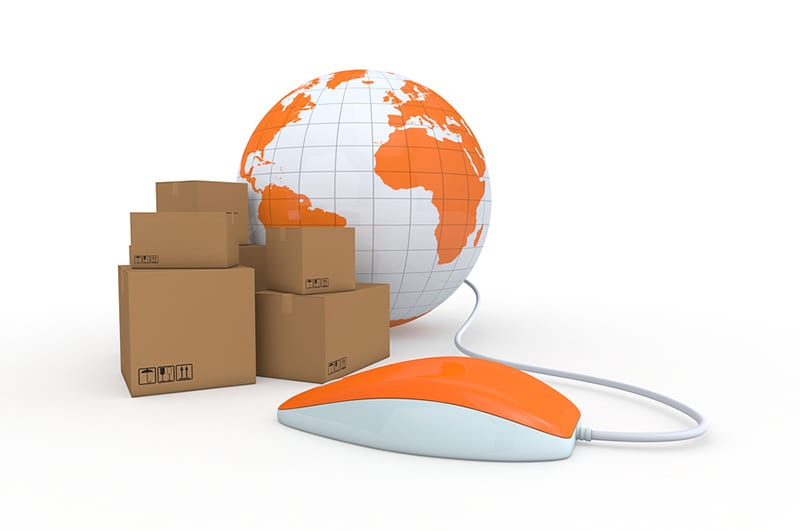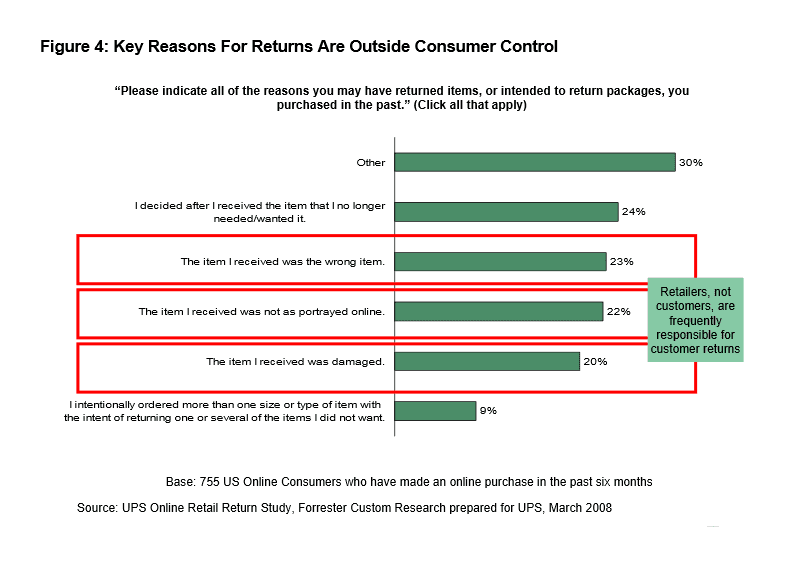Easy Return Policy Increases Purchases

How you approach and manage your ecommerce returns policy can mean that the difference in either securing long term retention and customer loyalty or losing business due to a decline in sales and customer satisfaction.
As ecommerce becomes the preferred method of shopping for consumers, newer studies are emerging, and their findings are helping retailers reshape their return policies to improve revenue streams.
Lenient Returns Increase Purchases
A recent Science Daily release found that consumers, above and beyond anything else, desire lenient returns. What’s more, when these returns are offered and are lenient, consumers purchase more goods from a retailer.
Following a total estimated online return volume of $280 million in 2014, a research group began to analyze the data. They poured through studies, findings and surveys to determine what consumers want from retailers and what a return policy says about a business.
The findings revealed that there was a direct connection between a lenient ecommerce return policy and improved purchases. The research provided by UT Dallas specifically focused on the effect of return policies on consumers.
“In general, firms use return policies to increase purchases but don’t want to increase returns, which are costly. But all return policies are not the same,” explained UT Dallas doctoral candidate Ryan Freling.
“The cost of dealing with returns affects the bottom line,” he said. “You want to look at the different dimensions of a return policy, because you may be able to manipulate the policy to achieve your goals.”
Why Do People Return Products?
But why do people return products, and what products get returned more often? According to the most current data, apparel is the top contender here.
As Freling puts it, “In the pre-purchase stage, consumers might think about the costs and benefits of making a purchase. If the return policy is lenient in scope — if a sale item can be returned — a consumer might say, ‘Oh this is on sale. It seems like a good value. I’ll buy it, and if it’s not the right color or fit, I’ll return it.'”
Retailers often fail to account for the fact that consumers are shopping in a two-dimensional world online, literally. They lack the ability to touch or feel the products, try them on for fit or use them. Basically, the consumer is riding off a product description and any visual imagery as well as online product reviews that have been attested by other shoppers who have purchased the same or similar products.
Due to the fact that the consumer is limited on sensory perception, online products have a stronger return rate than brick and mortar goods. According to a Wall Street Journal report, ecommerce returns increased by 15% between 2012-2013.
According to Fedex
- One-third of Americans will return at least one gift after the holidays.
- Women will return holiday gifts more often than men (36% of women compared to 31% of men).
- 45% of shoppers prefer to return unwanted gifts by shipping them back to the retailer.
- 33% of holiday gift-getters complete all returns before New Year’s Day.
Retailers Are Cause Of Most Returns
Another thing that retailers need to be mindful of is that the customers is usually right in a majority of instances of returns. According to a UPS white paper, about 65% of returns are actually a direct cause of the retailer, not the consumer.
The chart below reflects what causes ecommerce returns. Understanding that in most cases the return is actually not the consumer’s fault can help you craft a better return policy that puts you in a more favorable position to enjoy long term sales and improved revenue.

What Consumers Want
So what do consumers want out of a return policy and how can you assure that you are making yours lenient while not impacting your bottom line? One primary factor to consider is that consumers are clicks away from any other store online. And, furthermore, that you shouldn’t overlook the after buying experience, either.
“There’s been a notable change in attitudes … In years past, retailers weren’t all that receptive to it [offering lenient returns], they were thinking that by not offering, people will not return their purchases,” explained Chris Dunn, head of business development at TrueShip in a recent interview with the Wall Street Journal. “They’re starting to realize that you’re still going to return, and you’re not going to buy from that retailer again.”
In the 2015 UPS Pulse of the Online Shopper white paper, it was found that:
- 69% of consumers ship an item back to a retailer to make a return.
- 39% prefer to ship items back when making a return.
- 42% made a new purchase when returning the item to an online store.
Related Studies
- Over 63% of consumers read the online product returns policy before making a purchase (comScore).
- 81% of consumers want a convenient returns policy that is hassle-free with no return shipping cost (UPS).
- About one-third of all products ordered online are returned by consumers (WSJ), so understanding that returns are part of the buying process is important.
- When free returns are offered, purchases can be increased by up to 357% (CNBC).
- When return shipping fees are charged, 81% of consumers are less likely to make a future purchase (Upstream Commerce).
- Zappos gets 75% improved customer loyalty, repeat buyers from free returns, even though they charge more for their products (eCommerce Digest).
Reasons To Reshape Your Return Policy
Ask yourself this: What does your ecommerce return policy say about your online business… and how are consumers perceiving it?
Given the aforementioned statistics, another question comes to mind: Can you profit from improving your ecommerce return policy, and if so, by how much?
According to another Science Daily publication, the quick answer is: yes. In a recent study that followed 26,000 consumers over six months from an online retail store, five control groups were created. A majority of the groups adhered to a standard retail return policy, while the model group focused on creating a positive attitude towards returns.
Following three months of directing the policy and three months of the policy being in place, the results were simply astounding. When lenient returns with free shipping were offered, the model group made $1.8 million versus the $1.2 million that the control groups made.
“Retailers who do not consider product returns in their measure of customer value (even simply as a cost that needs to be managed) are missing out on profits they could be obtaining by understanding and allocating resources to product-returning customers. Paying attention to these customers pays off,” the report concluded.
Rewriting Your Returns Policy
Use this helpful infographic to learn what steps you need to take to revamp your returns policy so that it attracts more customers and more sales. Bear in the mind the three tenants of an effective and consumer-friendly return policy along the way, as is outlined in this Entrepreneur article: be liberal with your return policy; create an efficient process for returns; track and analyze your returns.
The After Buying Experience
When considering all of the facts about product returns that we have presented to you today, it’s also important to understand that customers want the return to be simple, fast and convenient.
A lot of online stores do their best to make the buying process as simple and as efficient as possible. This makes a lot of sense because the goal is to improve conversions and help shoppers find what they want and check out with ease – with as few steps to checkout as possible – in efforts to decrease cart abandonment rates.
But what a lot of online retailers fail to consider is what happens next. What happens when a consumer needs to return a product they purchased? This process is just as critical as the actual shopping experience, and arguably even more important. But why?
Because a shopper will not think about how easy the buying experience was when they need to make a return. What they will think about, and the memory that they will carry over with them, will be the experience that they had after making the purchase. If returns are difficult and cumbersome to the shopper, that’s what they will remember about your store and the experience; and that’s what will either lead them back for a future sale or deter them later on.
Why Automation Is The Key
To meet the needs of the consumer and to improve your bottom line, the simple answer to managing online product returns is this: automation. With an automated system in place, you can more easily appeal to the shopper’s desire to have a simple and straightforward return process.
The above cited studies prove this point. Shoppers want simple and easy returns, they want them automated, they do not want to have to pay for return shipping, and they want the process to be as easy as it was when they made the original purchase.
If you offer them this, you can improve customer loyalty and retention and can attract future sales. Even more interesting, you can actually stand to gain a sale (42% chance as mentioned above) when they are in the process of making the return.
Stores like Zappos have an astronomical return rate but still profit largely, and namely from the customers who make the most returns. Zappos has a return rate that ranges from 35%-50%, something that actually helps to fuel their profit engine.
“Our best customers have the highest return rates, but they are also the ones that spend the most money with us and are our most profitable customers,” explained a Zappos spokesperson in an interview with Internet Retailer.
Easy Returns Equates = Profits
What You Should Do Now
Here are 3 ways ReadyReturns can help you deliver amazing return experiences that eliminate prepaid labels and boxes, delight customers, and protect your margins:
Schedule a Demo – See how ReadyReturns turns product returns into your competitive advantage with “Amazon-like” returns and cost-saving features.
Start Your Free Trial of ReadyReturns (No CC Required) – Set up in minutes. Instantly offer QR code returns, product exchanges, and custom return rules that turn frustrated customers into repeat buyers.
Try ReadyCloud at No Cost – Why manage shipping and returns separately? Get ReadyShipper X, ReadyReturns, and more in one unified platform for seamless fulfillment and order management.
Share On:










